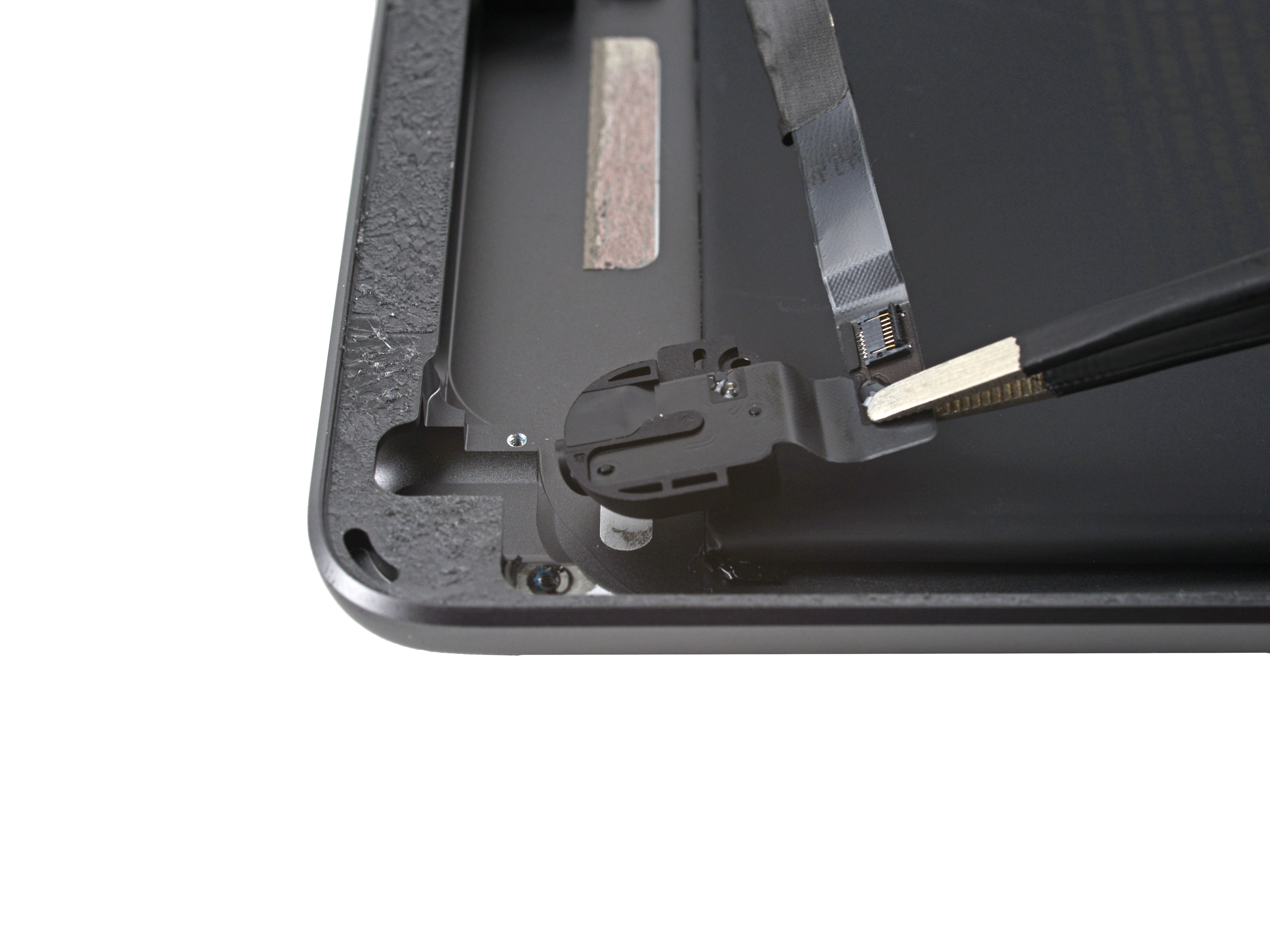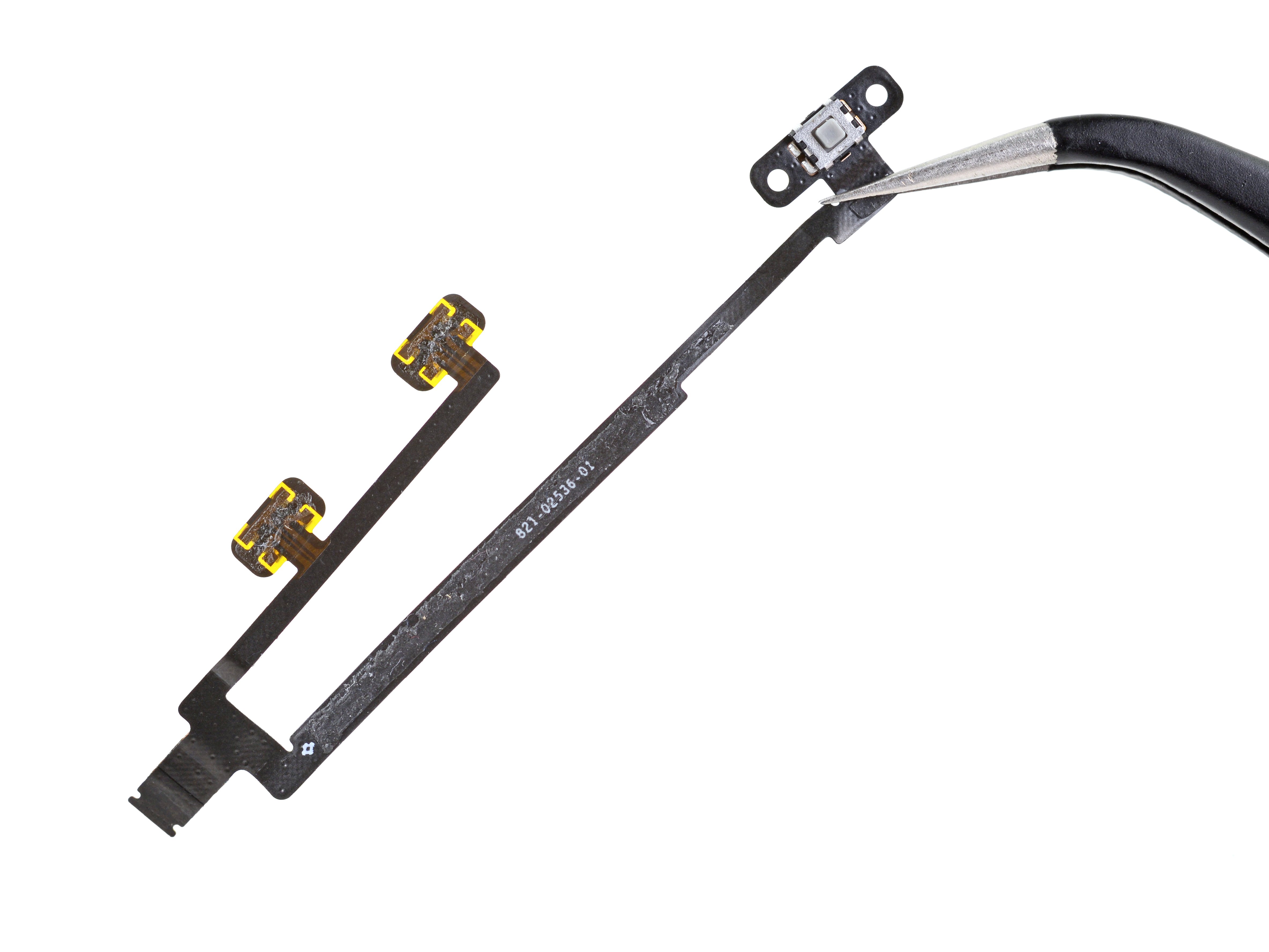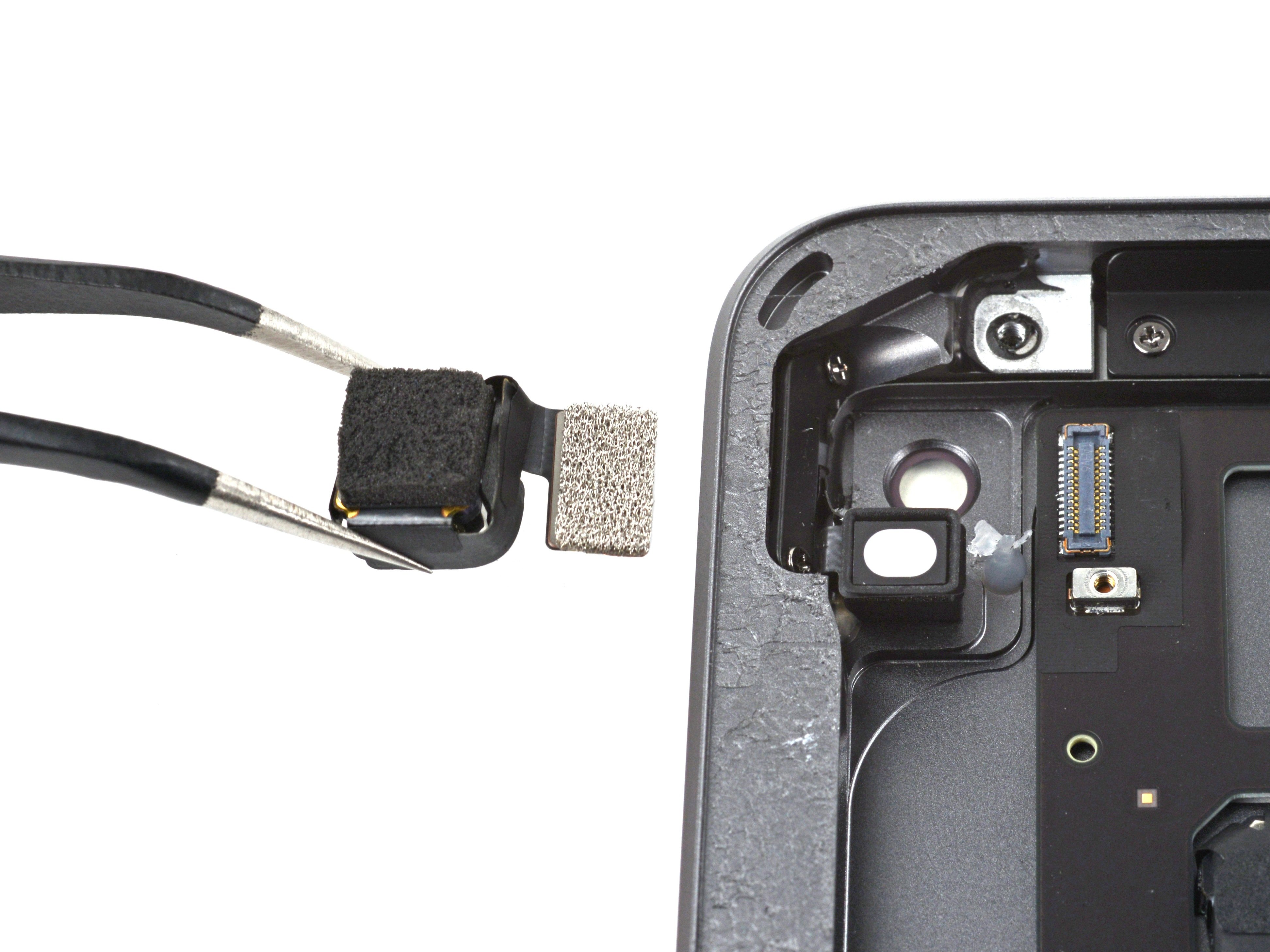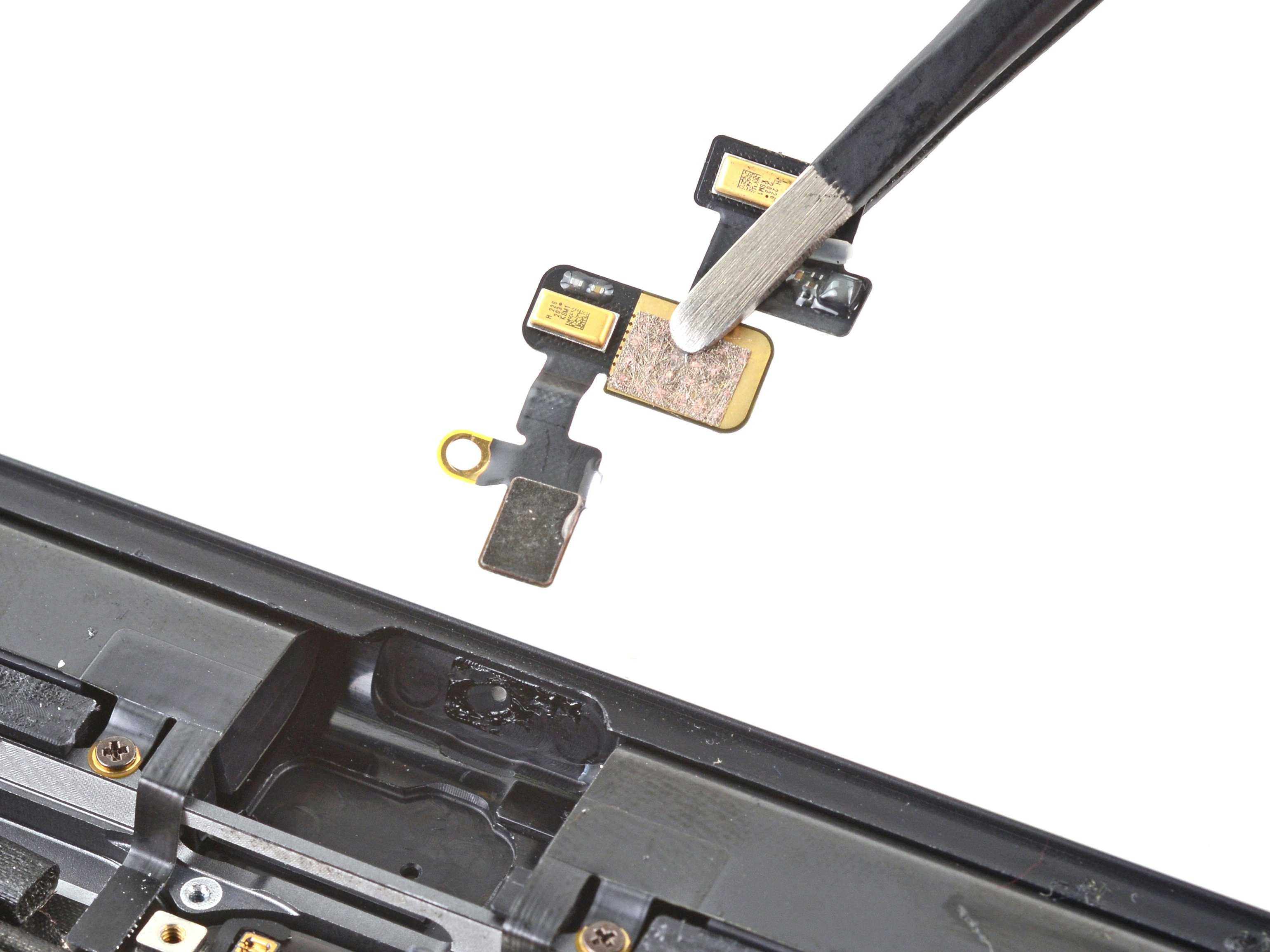iPad 4G Rotation Lock Mute Switch Replacement Guide
Duration: 45 minutes
Steps: 63 Steps
Hey there, repair rockstar! Just a heads up, if you run into any snags along the way, don’t hesitate to schedule a repair. We’re here to help you every step of the way!
Whether you’re a fan of using the mute switch as a rotation lock or prefer the rotation lock for muting, this guide is here to help you swap out that broken part with ease. Let’s get you back on track!
Step 1
It’s a good idea to give your microwave a little love before diving in. A quick clean-up will help prevent any stubborn residue from sticking to the iOpener.
– Pop the iOpener right in the middle of the microwave and let it soak up the warmth!
Tools Used
Step 2
Keep an eye on that iOpener! Overheating can lead to a dramatic burst, and we want to avoid any surprises. So, no heating beyond 100˚C (212˚F) please!
If your iOpener looks a bit puffy, steer clear! Safety first!
If the center of the iOpener is still too hot to handle, just hang tight and let it cool down a bit more before giving it another heat-up. A well-heated iOpener will stay cozy for about 10 minutes, so make the most of that warmth!
– Give your iOpener a cozy thirty seconds in the microwave to warm it up.
– As you tackle the repair, keep that iOpener nice and toasty by popping it back in the microwave for another thirty seconds whenever it starts to cool down.
Tools Used
Step 3
Careful with that iOpener! It’s going to be quite toasty, so handle it with care. An oven mitt could be your best buddy here!
– Carefully take the iOpener out of the microwave, gripping one of the flat ends to steer clear of the hot middle. Keep it cool, and let’s get to work!
Tools Used
Step 4
If a microwave isn’t in your kitchen arsenal, no worries! Just pop your iOpener into some boiling water to heat it up.
– Grab a pot or pan and fill it up with enough water to give your iOpener a nice, cozy bath.
– Turn up the heat and bring that water to a boil. Once it’s bubbling, go ahead and turn off the heat.
– Carefully drop your iOpener into the hot water for about 2-3 minutes. Make sure it’s fully soaking up the warmth!
– Using tongs, gently lift the heated iOpener out of the water—watch out, it’s going to be toasty!
– Give your iOpener a good towel dry; we want it nice and dry for action.
– And just like that, your iOpener is all set to go! If you find you need to give it another warm-up, just repeat the process: boil the water, turn off the heat, and let it soak for 2-3 minutes.
Tools Used
Step 5
– Grab a SIM eject tool or an uncoiled paperclip and give that SIM tray a gentle nudge to pop it out. You’ve got this!
Step 6
– Gently slide the SIM tray out of its cozy spot and set it aside. Time to say goodbye to the old SIM card!
– If you’re swapping out the SIM card, just pop it out of its tray and slide in the new one like a pro!
Step 7
Put on those safety glasses to keep your peepers safe, and watch out for that LCD screen—it’s more delicate than it looks!
– Got a cracked display? No worries! Keep those pesky shards contained and avoid any accidental pokes by slapping some tape on it.
– Grab some clear packing tape and lay down overlapping strips over your iPad’s display until it’s all covered up—like a protective shield!
– Now, follow the guide as best as you can. Just a heads up: once that glass is broken, it might decide to crack a little more while you’re working. You might need to whip out a metal prying tool to help scoop out those glass pieces.
Step 8
Just a heads-up! When you’re dealing with that tricky broken glass, it’s a smart move to pop on some safety glasses. They’ll keep those pesky shards from flying your way and ensure you stay safe while you work your magic!
– Place the iOpener flat on the right edge of the iPad, making sure to smooth it out for a snug fit against the surface of the iPad.
– Give the bag a little time to work its magic on the iPad for about 90 seconds before you dive into opening the front panel.
Tools Used
Step 9
Getting that wedged tip of the opening tool between the glass and plastic might take a little muscle. Just take your time and be gentle! Wiggle that plastic opening tool back and forth as needed, and you’ll be on your way to a successful repair.
– Look closely at the upper right corner of your iPad. You’ll notice a tiny gap in the adhesive ring, about 2.0 inches (~5 cm) down from the top. This little flaw is your entry point to success!
– Now, let’s get to work! Position your tool near the mute button. Gently slide the tip of a plastic opening tool into that gap between the front glass and the plastic bezel. Just nudge it in a bit to widen that crack—you’re doing great!
Step 11
– With the plastic opening tool snugly positioned between the front glass and the plastic bezel, gently slide a plastic opening pick into the gap right beside your trusty tool. You’re doing great!
Step 12
– Gently take out the plastic opening tool from your iPad, and slide that opening pick a little deeper under the front glass—aim for about half an inch. You’ve got this!
Step 14
That adhesive is super strong, so you might need to put in some elbow grease! Just take it slow and steady.
If you spot the tip of the opening pick peeking out from beneath the front glass, give it a gentle tug. While it’s totally safe to use the pick at this depth, just a heads up: it might leave some adhesive fingerprints on the LCD. No biggie, just part of the adventure!
– While you’re warming up the bottom edge with the iOpener, start peeling away the adhesive from the right edge of your iPad.
– Gently slide the opening pick down along the edge of the iPad, freeing that adhesive as you go along.
Tools Used
Step 15
As you work on releasing that sticky adhesive, you might find it handy to slide the heated iOpener back over to the right edge of the iPad. The timing here is key—it all depends on how long the iPad has been cooling off while you’ve been busy. Keep it warm and let’s get that job done!
– If your opening pick is feeling a bit sticky with the adhesive, just give it a gentle ‘roll’ along the side of the iPad to keep loosening that sticky stuff up.
Tools Used
Step 16
– Before you dive in and pull out that first opening pick from the bottom corner of your iPad, slide a second pick under the right edge of the front glass. This will help keep the adhesive from getting cozy again.
– Give your iOpener a little heat boost, then place it at the top edge of the iPad. You’re almost there!
Tools Used
Step 17
The Wi-Fi antenna is snugly fitted to the bottom right edge of the rear case of the iPad with screws and a cable. Given its position, it’s super important to handle it carefully, or you might end up causing some serious damage to the antenna. Let’s keep it safe and sound!
– Alright, it’s time to channel your inner repair guru, but let’s take it easy! We’re about to tackle some delicate work.
– Gently free the adhesive that’s holding the antenna to the front panel. Remember, the goal is to keep everything intact, especially the sensitive parts connecting the antenna to the bottom of the iPad. So, take your time and follow the upcoming steps with care!
Step 18
Be careful not to slide the pick past the bottom right corner! Doing so might put a little stress on the Wi-Fi antenna, and we don’t want that. Keep it cool and steady!
– Gently slide the opening pick around the bottom right corner of the iPad to free up that pesky adhesive. You’ve got this!
Step 19
As you glide the opening pick along the bottom right edge of the front panel, keep an eye out for the Wi-Fi antenna lurking near the corner. It’s a delicate little thing that can easily get snipped if the adhesive gives way in the wrong way. So, take it slow and steady!
Keep that pick snug under the front glass—just a little peekaboo will do! Pull it out just enough so that about 1/8″ (3 mm) of the tip is still cozy under the glass. You’re doing great!
– Gently glide the opening pick along the bottom edge of your iPad to free up the adhesive that’s holding the Wi-Fi antenna in place. You’ve got this!
Step 20
– Alright, let’s get into it! Once you’ve navigated past the Wi-Fi antenna (that’s about 3 inches, or 75 mm, from the right edge, right by the home button), pop that opening pick back in all the way.
– Now, gently slide the pick to the right to break free the adhesive that’s keeping the Wi-Fi antenna snug against the front glass.
Step 21
Keep the iOpener’s heating sessions to a minute or less, and remember to give it a cool-down break of at least two minutes before you heat it up again. You’re doing great!
If the adhesive has gotten a bit too chill along the bottom edge, give that iOpener a quick reheat to warm things up where you’re working.
– Keep gently working your way along the bottom of the iPad, letting the adhesive release as you go. Pull that opening pick out far enough to navigate around the home button, and once you’ve passed it, reinsert the pick to about 1/2 inch (10 mm) deep. You’re doing great!
Tools Used
Step 22
– Keep working that adhesive along the bottom edge of the iPad until it’s all released. You’re doing great!
– Now, leave the opening pick snugly tucked under the front glass near the home button. It’s like a little helper holding the fort!
Step 24
If the adhesive has chilled out a bit too much, just pop the iOpener back along the top edge and keep going. If your iOpener is feeling a little cold, give it a quick reheat and get back to work!
– Gently slide the opening pick along the top edge of your iPad, giving it a little tug to maneuver around the front-facing camera bracket.
– The adhesive in this area is pretty thick, so you might need to apply some muscle. Just take your time and be cautious to avoid any slips that could harm you or your iPad.
– If the pick seems to be stuck in the adhesive, try rolling it as shown in step 9.
Tools Used
Step 25
If the adhesive is nice and toasty, feel free to take the iOpener off the iPad for easier handling. But if it’s still pretty clingy, give the iOpener another heat-up and rest it on the left edge while you work your magic.
– Keep peeling away the adhesive at the top edge of the iPad, and gently work the opening pick around the top left corner like a pro.
Tools Used
Step 26
The digitizer cable hangs out about 2″ (50 mm) from the bottom of the iPad. Just a friendly reminder to stop sliding that pick when you’re about 2.25″ (60 mm) from the bottom. Keep it cool, and you’ll be golden!
– Gently glide the opening pick along the left edge of your iPad, releasing that sticky adhesive as you go. It’s a bit thinner here because of the digitizer stretching along the entire left side. Just keep the pick’s depth in check—no more than half an inch (10 mm) to avoid any mishaps with the digitizer. You’ve got this!
Step 27
Hey there! Just a heads up: the bottom of the digitizer cable is only about 1 inch (25 mm) away from the bottom of the iPad. So, take your time and be gentle, making sure not to accidentally snip that cable! You’ve got this!
– With the trusty opening pick still nestled under the bottom edge of your iPad, gently coax the adhesive loose at the bottom left corner. You’re almost there!
Step 28
– Grab one of those nifty opening picks and gently lift up the bottom right corner of your iPad. Once it’s popped open, give it a little hug with your fingers!
Step 29
Watch out for any stubborn adhesive that might still be hanging on! Grab an opening pick and gently slice through any sticky spots that could be keeping the front panel in place.
– Grab your iPad by the top and bottom right corners and give that front glass a gentle twist away from the device. It’s like a little dance move, just with your iPad!
– When putting it back together, don’t forget to whip out a microfiber cloth and some compressed air to wipe away any sneaky dust or fingerprints from the LCD. A clean screen is a happy screen!
Step 30
– Take out those four 2 mm Phillips #00 screws holding the LCD snugly against the aluminum frame. You’ve got this!
Step 31
– Grab your trusty plastic opening tool or a spudger and gently lift the right edge of the LCD out of the iPad. You’re doing great!
– Now, give that LCD a little twist along its left edge and let it rest comfortably on top of the front panel. Easy peasy!
Tools Used
Step 32
– With the pointy end of your trusty spudger, gently lift up the tape that’s hiding the LCD ribbon cable connector. You’ve got this!
Tools Used
Step 33
– Gently lift the retaining flap on the LCD ribbon cable ZIF connector. You’ve got this!
– With a little finesse, either use your fingers or grab some tweezers to carefully pull the LCD ribbon cable out of its cozy socket on the logic board.
– If your iPad decides to play hard to get and the LCD screen doesn’t light up after connecting the ZIF connector, don’t panic! Just hold down the power button and home button together for at least ten seconds until the Apple logo makes its grand appearance. You’ve got this!
Step 34
– Carefully lift the LCD away from the front panel without touching its surface. You’ve got this!
Step 35
– Grab your trusty spudger and gently lift the tape that’s keeping the touchscreen ribbon cable snug against the logic board. You’re doing great!
Tools Used
Step 36
– Lift up the retaining flap on each of the ZIF connectors for the touchscreen ribbon cable.
Step 37
– Grab your trusty spudger and gently slide the flat end under the digitizer ribbon cable to break that adhesive seal. You’re doing great!
– Now, with a steady hand, pull the digitizer ribbon cable straight out of its cozy little sockets on the logic board. Nice and easy!
Tools Used
Step 38
– Gently peel back the touchscreen ribbon cable and grab your trusty spudger. Use its flat end to carefully break the adhesive that’s holding the cable to the rear aluminum case. You’ve got this!
Tools Used
Step 39
– Time to get hands-on! Gently wiggle your fingers to coax that touchscreen ribbon cable out of its snug little spot in the aluminum frame.
– Now, let’s liberate the front panel from the iPad. Give it a little lift and watch it come free!
Step 40
– Gently peel back that piece of electrical tape that’s hiding the headphone jack assembly cable connector. It’s time to set it free!
– Now, grab your trusty spudger and carefully lift up the retaining flap on both ZIF connectors. These little guys are holding the headphone jack cable tight to the logic board, so give them a gentle nudge!
Tools Used
Step 41
– Gently slide the flat end of a spudger under the headphone jack assembly cable to free it from the adhesive that’s been holding it snugly against the rear aluminum frame.
– Carefully pull the headphone jack assembly cable straight out from its cozy little home on the logic board.
Tools Used
Step 42
– Gently peel away that piece of tape hiding the SIM board cable ZIF connector like a pro.
– Give the retaining flap on the SIM board cable ZIF connector a little flip upwards.
– With the tip of your trusty spudger, carefully pull the SIM board cable straight out of its cozy socket on the logic board.
Tools Used
Step 43
– Take out those three 1.75 mm Phillips #00 screws holding the SIM board to the aluminum frame. You’re almost there!
Step 44
As you gently move the headphone jack assembly cable aside, remember to take it easy on the headphone jack itself—yanking too hard might just send it packing!
– While keeping the headphone jack assembly cable out of the way, gently take out the SIM board from the iPad. Just a little finesse and you’re on your way!
Step 45
– Gently peel away the adhesive tape that’s snugly holding down the headphone jack assembly. You’ve got this!
Step 46
– Take out the lone 2.6 mm Phillips #0 screw that’s keeping the camera cable snug to the headphone jack assembly. You’re doing great!
Step 47
– Grab your trusty spudger and gently pry the front-facing camera from its snug little home on the headphone jack assembly. Easy peasy!
– Now, while keeping that spudger in place, slide it to the right to free the adhesive that’s holding down the camera cable. You’re doing great!
Tools Used
Step 48
– Grab your trusty spudger and gently flip up that little retaining flap on the microphone cable ZIF connector like a pro.
– Now, slide the tip of your spudger underneath the microphone ribbon cable and lift it out of its cozy ZIF connector.
– Give the spudger a little shimmy to the left to break the adhesive keeping the microphone ribbon cable snuggly attached to the headphone jack assembly.
Tools Used
Step 49
– Gently use the flat end of the spudger to lift the antenna connector cable out of its cozy spot on the headphone jack assembly board.
Tools Used
Step 50
– Gently lift the little retaining flap that holds the volume/power button ribbon cable connector snugly against the headphone jack assembly board.
– Carefully detach the volume button ribbon cable from its ZIF connector. You’ve got this!
Step 52
– Gently grasp the ribbon cable of the headphone jack assembly and give it a careful tug, pulling the assembly straight out towards the bottom of the iPad, keeping it parallel to the device. You’ve got this!
Step 53
– With both hands, gently grab the headphone jack assembly and pull it away from the iPad, being careful of any cables that might get snagged along the way.
Step 54
The two screws at the top are cleverly angled into the aluminum frame. Remember to keep your screwdriver aligned with the screw for a smooth sailing experience.
– Unscrew the screws holding the power and volume button cable to the aluminum frame. You’ve got this!
Step 56
– Carefully take out the lone 2.6 mm Phillips #00 screw that’s securing the volume button frame to the aluminum frame. You’ve got this!
Step 57
– Gently slide the edge of a plastic opening tool under the sleep/wake sensor, taking care not to hurt that delicate cable.
– Wiggle the plastic opening tool around the sensor to peel away the adhesive like a pro.
Step 59
– Grab the tip of your spudger, the narrow side, and gently lift the adhesive lurking beneath the volume button branch of the ribbon cable. You’re doing great!
Tools Used
Step 61
– With the spudger’s tip still nestled under the ribbon cable, gently coax the power button out of its cozy spot in the aluminum frame.
Tools Used
Step 62
– With a firm grip on the power & volume button cable, gently wiggle and coax the volume buttons and lock switch out of their snug little homes in the aluminum frame.
– Once you’ve freed them, simply lift the power & volume button cable and glide it out of the rear aluminum case like a pro.








































































































































